Emerging Technologies Assignment: AI For Soil Condition
Question
Assessment Task:
This is an individual assessment.
Each of you will analyse a given case study and identify the issues arising from the case study. Based on the issues found in the case study, you will identify three e-business use cases (for example, Predictive Maintenance). You will then choose as many emerging technologies as appropriate to address those use cases. You can choose any emerging technologies that fit the use cases, even the ones not covered in the lectures.
You will write a report illustrating how the chosen emerging technologies would fit into and address the requirements of the identified e-business use cases.
In the main body of the report, you will include the following topics.
1. A background study of the chosen emerging technologies
o You need to describe how the chosen emerging technologies evolved, their underlying designs, working principles, functions, and capabilities.
2. A brief description of the future potentials of the chosen emerging technologies
o You need to discuss the future applications of the chosen emerging technologies in e-business in general.
3. An illustration of how the chosen emerging technologies would fit into the identified e-business use cases
o You need to illustrate what issues of the identified use cases would be resolved by the chosen emerging technologies.
4. Details of how the chosen emerging technologies would address the requirements of the identified use cases
o You need to elaborate how the chosen emerging technologies would interoperate to fulfill the requirements of the identified use cases.
Answer
1. Introduction
'Soil Testing' is an integral part of sustaining the agriculture process. It allows the farmers to understand its composition, 'nutrient' levels, enhance the 'crop' production, and detect the 'pH level'. The accurate understanding of these factors will save the farmers from implementing excessive 'fertilizers', and save money. The report on emerging technologies assignment has indicated some specific problems in improving the current condition of agriculture, such as unable to detect 'soil condition' regularly, time-consuming farming process, and increasing maintenance cost. The current emerging technologies assignmenthas pointed out the implementation of emerging technologies, such as IoT and AI in solving the 'use case' problems – monitoring the soil, automated farming process, and understanding current conditions to take required actions.
2. Background of the theme explored in the emerging technologies assignment
2.1. IoT
IoT is an emerging concept in the field of IT industry. It helps to connect real-life objects with the Internet. The objects have a unique IP address and thus they resemblance as the unique identity. The devices that have an inbuilt IoT system are connected with sensors and thus, it can be accessed through remote places (Khan, et al., 2017). It helps the users to access the devices and operate them smoothly. The IoT uses the concept of wireless technology along with microservices that helps to connect the devices with the internet.
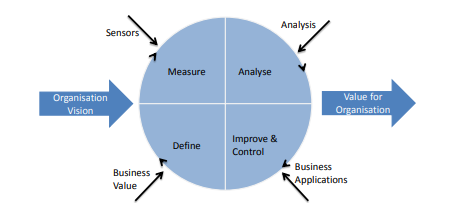
Figure: - Operations of the IoT in respect of business value (Khan, et al., 2017).
The convergence concept of machine learning, real-time analytics, and commodity sensors make the IoT devices efficient for providing high performance. It is stated in the emerging technologies assignmentthat the performance can be measured through the working of the device. The devices are mainly embedded systems that are they are embedded with many technologies like sensing and machine teaching (Khan & Salah, 2018). The IoT has built an automated system that can be used to transfer the data automatically without human intervention. The process is faster than the manual process. The IoT devices provide high performance than manual devices.
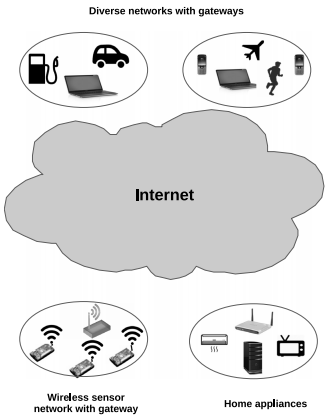
Figure: - Connecting the various devices through IoT (Khan & Salah, 2018).
2.2. AI
The concept of Artificial Intelligence explored in the emerging technologies assignment is machine-based technology that focusses on implementing reasoning power on machines. Artificial Intelligence can replace the work of humans. The “cognitive” functions are inbuilt in the human mind can be installed in the machine through logical codes (Acemoglu & Restrepo, 2018). Herein emerging technologies assignment, the use of logical codes helps to inbuilt the factors like "problem-solving" in the machine to provide efficient service to the users. The users thus can work faster as it takes few seconds for executing the process. Implementing the process of “learning” in the machine helps the users to operate different modified functions in it.
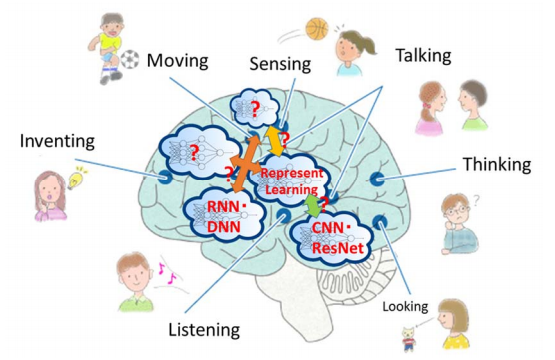
Figure: - Different components operate by the Artificial intelligence as the Human Brain (Lu, et al., 2018).
Many subfields have come into the market like “robotics” and "machine learning" that has helped in redefining the concept of "Artificial Intelligence". With the advancement in Internet Technology, the fields have “Artificial Intelligence” have also grown rapidly (Lu, et al., 2018). Though the AI has been invented as the academic discipline in 1955 the advancement starts after the invention of the Internet Technology. The advancement in AI has changed the concept of the learning power of humans and its style of working. AI is leaving its footprints in every sector respective of operations. In this emerging technologies assignment, it has been considered as the "boon" of Technology.
3. Future Potentials
3.1. IoT
It is evident in this emerging technologies assignmentthat the increasing advancement of technologies makes it easier to enhance the connectivity through networks, effective implementation of AI, secure transaction and transmission process, and diverse opportunities to get success. In different industries, IoT enables the authority to achieve automation to save excessive efforts, collect accurate data, and analyze them to make effective planning. IoT is customizable according to the operational and business processes in different industries to present the required results and information timely. Currently, IoT provides a wide range of interconnection, such as ‘time-sensitive’ networking, advance ‘telecom network’, and various ‘automation’ techniques, which determines the future of most of the existing industries (Wollschlaeger, et al., 2017). In the recent scenario of emerging technologies assignment, IoT is an integral part of transportation, logistics, manufacturing, agriculture, aviation, and many other industries for sustaining their operational process.
IoT provides networking through the internet which allows different industries to identify, trace, monitor, and position the required information. The effective implementation of IoT will sustain some critical areas, such as providing strong security, declining the technology cost in tracking and tracing information, manages data conveniently, and better 'interoperable' function. IoT is also working behind enhancing the mentioned factors for providing a better future (Patel & Patel, 2016). The creation and implementation of ‘interoperable’ software and applications by using IoT for different industries in managing different areas, such as in agriculture industry, the software that provides ‘wireless sensor network’ or ‘soil testing’ function generates future ‘potential value’ to the farmers (Tzounis, et al., 2017). The enhancement and development of different technologies using IoT will provide ‘smart connectivity’ in future operations of different industries. However, the concerning factor is still related to the privacy and security issue from the potential cybercrimes.
3.2. AI
‘Machine Learning’ application is a widely accepted technology from “Artificial Intelligence” (AI) in providing automated learning facility to the computer programs without implementing manual programming. It allows the computer programs to identify required development areas, generate data, and implement the 'self-learning' process top to develop those areas. However, the researchers have been pointed out that AI is focusing on a wide range of 'cognitive' systems that are far more advanced than the 'machine learning' system. The new techniques in AI open a vast opportunity for various businesses in accelerating the existing ‘machine learning’ system in enhancing the ‘human capability’ (Bessen, et al., 2018). These aspects are related to managing business and operational activities, decline manual efforts, and global distribution and connectivity. The effective implementation of AI applications makes the future comes true in analyzing data acquired from IoT connectivity, and develop the systems automatically. The impact of AI in the future can affect industries like healthcare, manufacturing, education, media, agriculture, and many others. However, in regards to the case scenario of emerging technologies assignment, the concerning aspect in AI can be its automated learning factor without implementing the human perspective can result in devastating incidents.
4. Application of the Technologies in the Use Cases
The current emerging technologies assignmenthas identified three use cases after analyzing the issues related to the ‘soil testing’ and agriculture development factors. These use cases are ‘predictive maintenance’, ‘soil monitoring system’, and ‘condition-based maintenance’. The emerging technologies assignment is aiming in implementing IoT and AI technologies in achieving the use cases successfully in sustaining the agriculture process.
4.1. Identification of the Use Cases
a. Predictive Maintenance
'Predictive Maintenance' works as a technique in predicting and determining conditions during a service process to understand and estimate development factors. It prevents the industries from facing any uncertain situation and lets them spending a significant amount of money to recover that situation. It provides results which are the mixture of time and situation-based factors for a specific condition. The effective implementation of advanced technologies, such as IoT enables the industries to design their systems for sensing, monitoring and tracking specific information for further development (Civerchia, et al., 2017). 'Predictive Maintenance' uses a 'non-destructive testing' (NDT) system to monitor, test, and evaluate specific properties or materials without damaging anything. It is time and cost-efficient in monitoring and generating accurate results to make planning for future development. Some of the benefits of incorporating 'Predictive Maintenance' are mentioned in the next section of emerging technologies assignment,
- It reduces monitoring and maintaining cost and time in analyzing any critical area.
- It sustains the 'lifetime' of the existing technologies and systems in different industries.
- It increases the production process and provides safety to the operations.
In the agriculture industry, the implementation of 'Predictive Maintenance' action can detect 'soil condition' effectively and generate valuable reports at an earlier stage.
b. Soil Monitoring System
In the current emerging technologies assignment, the 'Soil Monitoring System' is an essential use case that needs to be maintained by implementing advanced technologies. The processes related to the 'Soil Maintenance System' are generally operated by using IoT technology as a part of the 'smart agriculture' system. It will generate results related to the 'soil condition', pH level, temperature, and humidity factors (Ananthi, et al., 2017). The results will allow the farmers to use suitable crops that can grow effectively in that 'soil condition.' It also helps the farmers in understanding the temperature condition and track data for predicting the required factors. The development in the agriculture industry is important, which needs proper data related to soil and temperature conditions to save additional time and cost. The 'Soil Monitoring System' uses the 'soil moisture' sensor in understanding the farming capacity in a particular field, the water quality, and the requirement for using fertilizer in what quantity. It is important in maintaining the ‘soil condition’ for acquiring sustainable development in the agriculture industry.
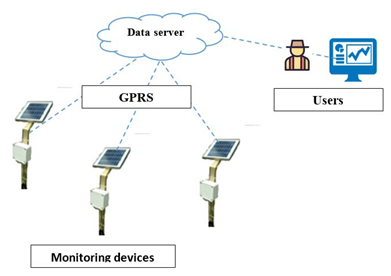
Fig 1: Design of ‘Soil Monitoring System’ (Cao-hoang, et al., 2017)
The manual process in testing and analyzing the 'soil condition' by farmers is time-consuming and requires a lot of effort. The 'Soil Monitoring System' as a part of the 'smart agriculture' process is effective for developing farming and production capacity. The moisture, conductivity, and temperature of the soil are important aspects of conducting quality farming processes (Cao-hoang, et al., 2017). The implementation of technology provides accurate results without any manual effort. It is both sustainable, and time and cost-efficient. The benefits of incorporating 'Soil Monitoring System' as an effective action for the current research process are presented in the following section of emerging technologies assignment,
- It provides an accurate 'soil moisture' report to enable the farmers to plan for the irrigation system in advance.
- It saves water by generating effective ‘soil sensor’ results, which eventually saves energy, fertilizer implementation, farming costs, and additional time.
- The development of agriculture by taking actions like the 'Soil Monitoring System' can increase the profit percentage of the farmers.
c. Condition-based Maintenance
‘Condition-based Maintenance’ process monitors and analyzes the situations based on its condition, and generates suitable maintenance strategies. It depends on the decreasing performance quality or experiencing low standard results, and give alerts to the industries to take appropriate action to resolve the situation. The 'Predictive Maintenance' process indicates changes before the actual process, where 'Condition-based Maintenance' provides current-time solutions to develop the existing insufficient condition. ‘Condition-based Maintenance’ (CBM) action monitors the exiting 'underlying deterioration' to recommend a suitable solution to the current situation (Alaswad & Xiang, 2017). The increasing usage of technology demands constant monitoring systems. The study developed in the emerging technologies assignment illustrates that the implementation of (CBM) reduces equipment costs and increases the reliability of different technologies.
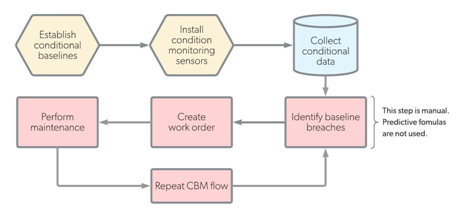
Fig 2: ‘Condition-based Maintenance’ Workflow outlined in the context of emerging technologies assignment(UpKeep , 2020)
The adoption of 'on-time' result generated technologies develops the operational processes in any industry. In the agricultural industry, it is important to acquire current results to make an appropriate farming plan for obtaining desired results. 'Condition-based Maintenance' action generates better result in understanding the current ‘deterioration’ process, potential failures and its intensity, accurate measurement of the condition, and appropriate maintenance factors (de Jonge, et al., 2017). It uses ‘monitoring sensor’ to generate accurate results, and create works for developing the maintenance process. The ‘smart agriculture’ practice cannot be only dependable on ‘Predictive Maintenance’ action, it requires ‘on-time’ results to analyze the current process and identify errors to mitigate. The potential benefits from ‘Condition-based Maintenance’ action can be,
- It helps in decreasing the unplanned steps and improves the operational processes.
- It generates improvement in the user equipment, its availability, and the reliability factor.
- It reduces the unnecessary time on maintaining things daily, it generates the maintenance process only when it needed.
4.2. Applying the Technology in Use Cases
|
Use Cases |
IoT |
AI |
|
‘Predictive Maintenance’ |
The implementation of IoT in ‘Predictive Maintenance’ action helps in gathering accurate data by using ‘sensor’ technology. It also filters the acquired data before storing it in ‘cloud storage’. Herein emerging technologies assignment, the implementation of IoT in the ‘Predictive Maintenance’ process can predict potential errors and damage in advance (Grizhnevich, 2018). It helps in extending the 'lifetime' of the user equipment and save time by almost 30 percent. The advance prediction for understanding the errors or damages can save extra costs in resolving it later. It influences the 'decision-making' process. In the 'smart agriculture' process, the 'Predictive Maintenance' action by implementing IoT will allow the farmers to use a 'sensor' in generating reports from a specific area. It will also help in predicting accurate results and potential risks by analyzing previous data to decrease the failing plans. |
The ‘machine learning’ application from the AI technology can help in calculating the data and reports to predict future results. 'Predictive Maintenance' action generates data and reports from the previous plans, the 'sensor' system, and weather conditions to determine a near-accurate future condition. In the agricultural work, it will help the farmers in making advance plans according to the results to avoid the uncertain situation. The effective implementation of AI analyzes the massive data acquired by the ‘Predictive Maintenance’ system and translates them to understand its meanings. It also helps the systems from getting overload with unnecessary data and reports. AI provides accurate knowledge to the people regarding the future prediction, and the focus of the planning process according to the desired result. |
|
‘Soil Monitoring System’ |
The usage of IoT in the ‘Soil Monitoring System’ empowers the farmers in increasing the improvement factor in farming processes, enhance the existing resources, and restricts any potential diseases from getting spread (Hughes, 2019). The 'soil condition' detection sensor is a result of the effective implementation of IoT technology, which generates data related to temperature, soil quality, oxygen rate in the soil, and the 'photosynthetic radiation' factor. It helps the farmers to analyze the data related to the 'soil condition' and plan for farming suitable crops. The emerging technologies assignment examines that it improves the product quality and standard and saves the agricultural produce from spreading any harmful effects. The ‘smart agriculture’ process depends on temperature, weather, crop condition, and soil quality before starting the farming process. IoT gives accurate results on these factors for acquiring sustainable results. |
The discussion on the implementation of AI provided in the emerging technologies assignmentgenerates better productivity at a reasonable cost by acquiring data from the 'Soil Monitoring System'. The increasing population around the world demands a significant growth in the agricultural processes. The implementation of smart technologies, such as AI can improve and sustain the agricultural processes (Vincent, et al., 2019). AI mainly generates data related to the soil condition, weather, equipment availability, and other factors that are crucial for acquiring agricultural growth. AI provides 'sensor-based' data in the 'Soil Monitoring System' and produces a report by obtaining, analyzing, and understanding the current conditions. |
|
‘Condition-based Maintenance’ |
‘Condition-based Maintenance’ provides data related to the current situation by using IoT. It is cost-efficient and sustains the operational processes related to farming. It is similar to the 'Predictive Maintenance' system, but it only generates data based on 'real-time' actions. It prevents the agricultural process from getting decreased and lower standards by alerting required maintenance factors. |
The AI in the 'Condition-based Maintenance' system generates data by analyzing the data and records continuously for identifying any errors in the process. It is time and cost-efficient and generates accurate results. It enhances the sustainability in the agricultural process. AI generates results from the 'condition monitoring' process and plans for appropriate 'maintenance' action in acquiring agricultural development. |
5. Addressing the Requirements of the Use Cases Through Technologies
5.1. Identification of the Requirements
The requirements provided within the emerging technologies assignment are mainly analyzed from the use cases as discussed in the case study. The use cases have been measured according to the problems in the case study. The requirements are listed based on the techniques of the use cases and their effectiveness in mitigating the problem. The requirements are noted in the following section of emerging technologies assignment: -
a. Testing the soil using sensor technology
The farmers have to face severe due to a lack of knowledge in soil moisture. Testing the soil is one of the major aspects of the farming industry. The agriculture industry or farming industry is depending on farmers. Thus, to maintain their consistency in the sale, crops must be chosen tactfully (Cao-hoang, et al., 2017). The crops must be planted in such a way so that it did not get ruined. Before planting the crops, the soil must be tested to evaluate it fertilizes. The moisture level in the soil decides the furtiveness of the soil. Thus, it is stated herein emerging technologies assignment that the furtiveness of the soil must be checked for achieving great profit.
b. Retrieving the information of testing by the user
The user or the farmer must know the soil test. The information must be collected by the farmer for cultivating the good quality of crops (Cao-hoang, et al., 2017). The quality and the production of the crops are depending on soil moisture. Good soil is defined by its moisture, texture, and quality (Cao-hoang, et al., 2017). Thus, the quality test is important for cultivating the good quality of crops. The farmer must able to retrieve the information about soil quality. It will help the farmer to grow suitable crops that will help in increasing their productivity (Wollschlaeger, et al., 2017). The growth of the agriculture industry has not seen rapid growth due to a lack of implementing technological tools.
c. Using the technology of agro pad for testing the soil sample
Agro pad is a technological device invented by IBM, especially for the agriculture industry. It is used to measure the texture and quality of the soil and decides which crop is suitable for the soil (Cao-hoang, et al., 2017). Agro pad uses the concept of sensing technology for testing the soil. The soil sample needs to be tested as it helps to give high performance to the users (Cao-hoang, et al., 2017). The users or farmers can predict the crop quality by testing the quality of the soil. The soil must be thus tested by implementing technological devices for getting true results.
d. Saving the results in the IBM Cloud
The IBM Cloud is the intranet service that is used to store the results securely. Saving the results will help to use that in the future. The experts in the agriculture industry can help the farmers by making charts of them. The readings obtained in this section of emerging technologies assignment signify that it will increase the productivity of the crop (Vincent, et al., 2019). There is no chance of misusing the data or forgetting the data for future use. The intranet service has been implemented by IBM to provide better services to the users in the agriculture industry.
e. Provides time and cost-efficient services
Time and cost are other major factors in the agricultural industry. The time needs to be evaluated for each of the crops. It will determine the harvest time of the crop (Acemoglu & Restrepo, 2018). The cost is also essential with time. The cost determines the expenses on the crop. The crop must be taken as the project and thus the expensed must be planned in the initial stage (Cao-hoang, et al., 2017). It will help to get high quality of crops without compromising the soil quality. The time and cost help to maintain the consistency in crop production.
5.2. Applying the Technologies for Addressing the Requirements
The five requirements presented in the emerging technologies assignmentcan be addressed by emerging technologies. The first and second points of the requirements can be addressed by the IoT. The third, fourth, and fifth points can be addressed by Artificial Intelligence. The discussion has been made by distinguishing the requirements through emerging technologies.
a. Testing the soil using sensor technology
The soil can be tested through the IoT device. It helps to measure the accurate reading of the soil. The soil measurement helps in evaluating the texture of the soil and the type of crop that can be planted (Ananthi, et al., 2017). The decision regarding the type of crop must be decided by the experts along with the farmers. Taking a view from the expert will help to increase the productivity of the crop (Ananthi, et al., 2017). Thus, the IoT will help to bring productivity to the agriculture industry.
b. Retrieving the information of testing by the user
The use of an IoT sensor for testing the soil helps to collect information on the moisture and temperature of the soil. The wetness of the soil is decided by the sensor built in the farmland (Hughes, 2019). The information is sent to the application that is connected to the Wi-Fi module. It will help the users to retrieve the information. The user or the farmer can use the information for future use (Wollschlaeger, et al., 2017). The information on the soil will help the farmers to decide their crop quality. The farmer can also apply fertilizers and water for increasing the fertility of the soil (Wollschlaeger, et al., 2017). The wetness of the soil can also be measured by the application. The user’s cam retrieves the information of the soil without visiting the land physically (Wollschlaeger, et al., 2017). Manual testing needs more time and the harvesting time of the crop also gets increased.
c. Using the technology of agro pad for testing the soil sample
The use of Artificial Intelligence in testing the soil sample helps to provide a high quality of results. The concept of the Agro pad by IBM has defined as the revolutionary product for the agricultural industry (Vincent, et al., 2019). The Agro pad use sensing technology for collecting the sample on a pad. The quality is tested by using chips that contain micro fluids and is placed on the card (Bessen, et al., 2018). The results of the reaction obtained in the emerging technologies assignment are then used for understanding the quality. The colorimetric test has been performed to show the reaction with the chemical (Bessen, et al., 2018). The expert or farmer then can scan the agro pad for retrieving the result. The result has been retrieved in the numeric value for the perfect understanding of the quality (Vincent, et al., 2019). It also has an application interconnected with the pad for evaluating the results.
d. Saving the results in the IBM Cloud
As provided in the emerging technologies assignmentthat the IBM Cloud is the intranet system by the IBM hat used to store the information securely. The IBM Cloud used to store the gathered information on soil quality for future use (Acemoglu & Restrepo, 2018). The experts can prepare a chart based on the results that have been gathered in the Cloud. The farmers can yield expert advice and plant the crops according to that (Bessen, et al., 2018). It will help to increase the quality of the crop. The crop can thus gain its quality in the high textured soil (Lu, et al., 2018). The crop running can also be prevented with the help of the collection of the previous data. The information provided in the emerging technologies assignmentsignifies that the data can thus, is an essential factor in the Agriculture industry for increasing the growth of the sector (Acemoglu & Restrepo, 2018). The high productivity in the crops will help to eradicate the food demand from the communities.
e. Provides time and cost-efficient services
The time and cost-efficient services need to be analyzed by Artificial Intelligence. Artificial Intelligence has the concept of machine learning that helps to analyze the services regarding the cost and time (Acemoglu & Restrepo, 2018). The time of the crop harvest and the budget regarding the expenses on the crop must be analyzed using the technological tools. Sensing technology in machine learning helps to operate these services. It will help in providing better services to the farmers regarding crops.
6. Conclusion
The soil detection for crop implantation has been discussed on the emerging technologies assignment. Emerging technologies have a great contribution to the detection of the soil. The business use case has helped to determine the actions that are fruitful for mitigating the challenges in soil detection. The implementation of the use case through emerging technologies like IoT and Artificial Intelligence will help to achieve the goals regarding the detection of the soil and quality of the crop. The requirements have been measured based on the use case as provided in the Project. The requirements mentioned in the context of emerging technologies assignment must be met to achieve the great quality of the crops. The emerging technologies will help to address the requirements and successful implementation of it. It will help in the overall growth of the Agriculture Industry.
?
7. Bibliography
Acemoglu, D. & Restrepo, P., 2018. Artificial intelligence, automation and work, s.l.: emerging technologies assignmentNational Bureau of Economic Research.
Alaswad, S. & Xiang, Y., 2017. A review on condition-based maintenance optimization models for stochastically deteriorating system. Reliability Engineering & System Safety, Volume 157, pp. 54-63. Ananthi, N., Divya, J., Divya, M. & Janani, V., 2017. IoT based smart soil monitoring system for agricultural production. s.l., s.n., pp. 209-214.
Bessen, J. E., Impink, S. M., Reichensperger, L. & Seamans, R., 2018. The Business of AI Startups. Boston Univ. School of Law, Law and Economics Research Paper, Issue 18-28.
Cao-hoang, T., Tinh, P. & Can, N., 2017. Design of a Cost Effective Soil Monitoring System to Support Agricultural Activities for Smallholder. International Journal of Information Communication Technology and Digital Convergence (IJICTDC) (2466-0094), 1 12, Volume 2, pp. 1-5.
Civerchia, F. et al., 2017. Industrial Internet of Things monitoring solution for advanced predictive maintenance applications. Journal of Industrial Information Integration, Volume 7, pp. 4-12.
de Jonge, B., Teunter, R. & Tinga, T., 2017. The influence of practical factors on the benefits of condition-based maintenance over time-based maintenance. Emerging technologies assignmentReliability engineering & system safety, Volume 158, pp. 21-30.
Grizhnevich, A., 2018. A comprehensive guide to IoT-based predictive maintenance. [Online]
Available at: https://www.scnsoft.com/blog/iot-predictive-maintenance-guide#:~:text=An%20IoT%2Dbased%20predictive%20maintenance%20solution%20can%20help%20to
%20predict,fragile%20spindles%20before%20they%20break.
[Accessed 11 June 2020].
Hughes, J., 2019. Soil Monitoring with IoT – Smart Agriculture. [Online]
Available at: https://www.manxtechgroup.com/
soil-monitoring-with-iot-smart-agriculture/#:~:text=Soil%20Monitoring%20with%20IoT%20uses,potential%20and%20soil%20oxygen%20levels.
[Accessed 11 June 2020].
Khan, A. et al., 2017. A Holistic View of the IoT Process from Sensors to the Business Value.. s.l., s.n., pp. 392-399.
Khan, M. A. & Salah, K., 2018. IoT security: Review, blockchain solutions, and open challenges. Future Generation Computer Systems, Volume 82, pp. 395-411.
Lu, H. et al., 2018. Brain intelligence: go beyond artificial intelligence. Emerging technologies assignmentMobile Networks and Applications, 23(2), pp. 368-375.
Patel, K. K. & Patel, S. M., 2016. Internet of things-IOT: definition, characteristics, architecture, enabling technologies, application & future challenges. International journal of engineering science and computing, 6(5). Tzounis, A., Katsoulas, N., Bartzanas, T. & Kittas, C., 2017. Internet of Things in agriculture, recent advances and future challenges. Biosystems Engineering, Volume 164, pp. 31-48.
UpKeep , 2020. Predictive vs Condition-Based Maintenance. [Online]
Available at: https://www.onupkeep.com/learning/maintenance-types/predictive-condition-based
[Accessed 11 June 2020].
Vincent, D. R. et al., 2019. Sensors driven ai-based agriculture recommendation model for assessing land suitability. Sensors, 19(17), p. 3667.
Wollschlaeger, M., Sauter, T. & Jasperneite, J., 2017. The future of industrial communication: emerging technologies assignmentAutomation networks in the era of the internet of things and industry 4.0. IEEE industrial electronics magazine, 11(1), pp. 17-27.












